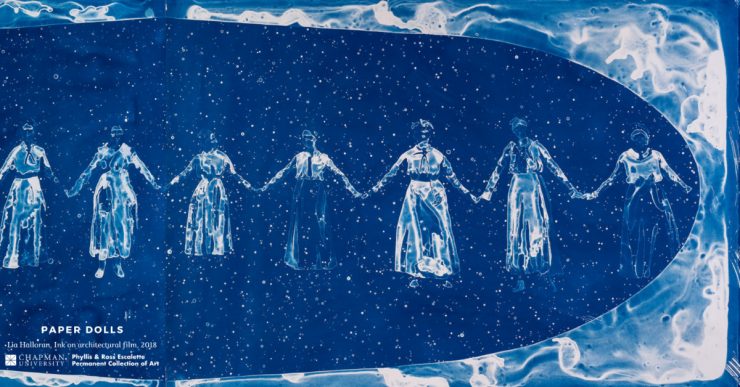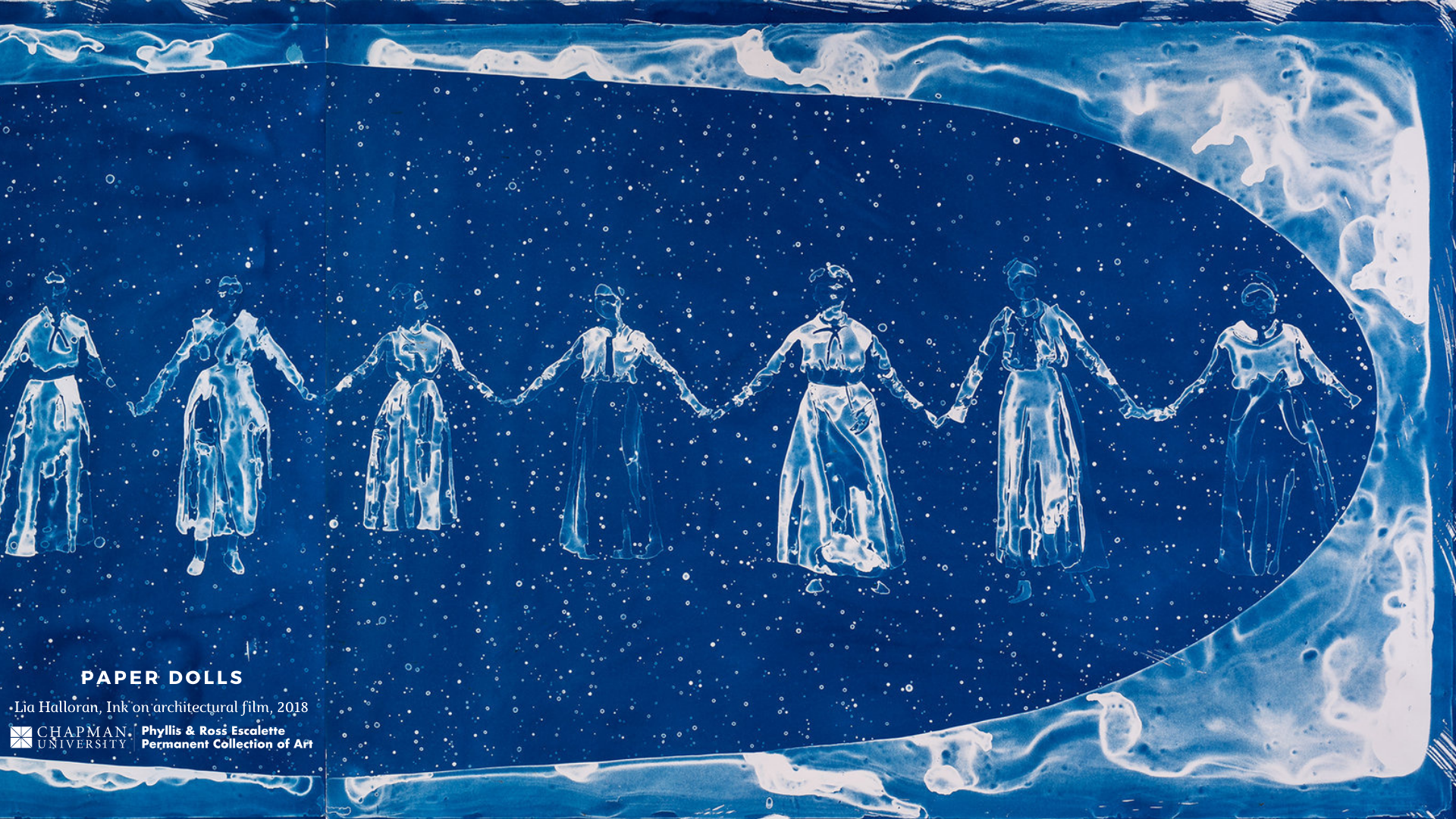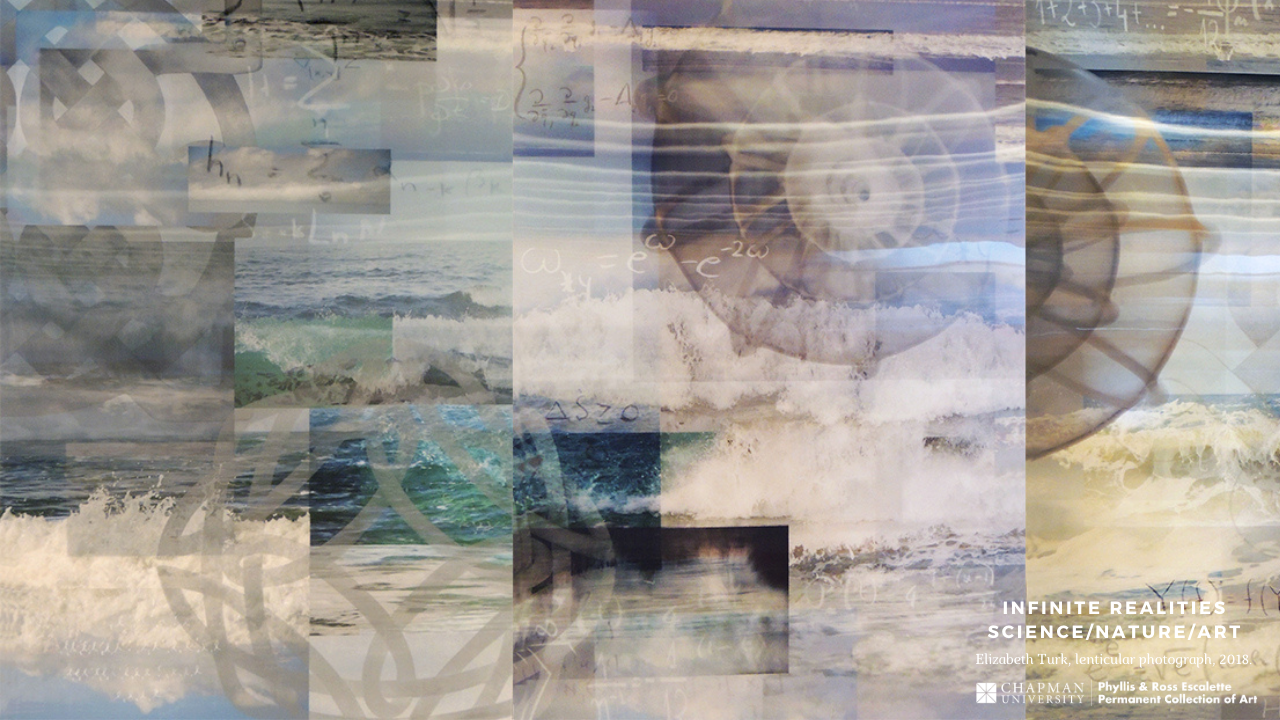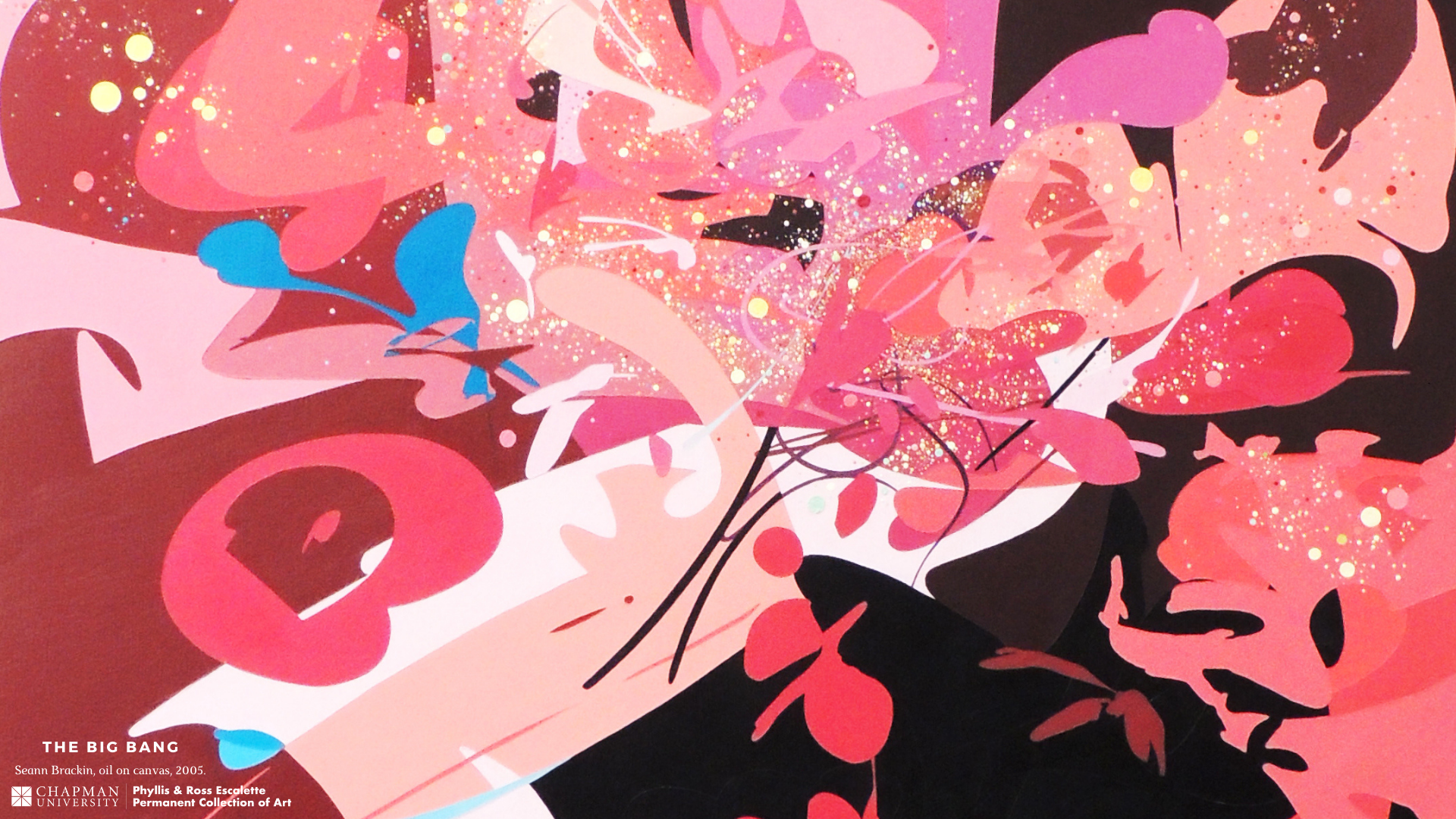The Escalette Collection of Art is excited to announce a new series of Zoom virtual backgrounds. Download any of the backgrounds below to combat Zoom fatigue and add some inspiration to your next meeting! These Zoom backgrounds are also available for download on our website (chapman.edu/escalette). We will continue to add more background options, so be sure to check back soon!
The Escalette Collection of Art was founded on the belief that artwork should be displayed in public spaces throughout campus so that students, faculty, and staff are surrounded by inspiring and thought-provoking works. Since most of our meetings and classes are taking place online, we wanted to bring the artwork to you! We hope these Zoom backgrounds allow you to take even a moment’s pause in our hectic “new normal” to discuss and reflect.
We encourage you to read more about the artist and artwork that you’ll be displaying in your next virtual meeting.
“Paper Dolls” by Lia Halloran
From 1885 to 1927, the Harvard College Observatory employed a group of women “computers” who made major contributions to astronomy. They discovered galaxies and nebulae; they devised ways to measure distance in space; they created a system for classifying stars on which our current system is based; they published their discoveries in scientific journals, under their own names. They were photographed, holding hands like a string of paper-dolls, outside the Observatory Director’s residence in 1918. It was this historic image that Lia Halloran used as the starting point for the two Paper Dolls works in this gallery, which pay tribute to the work of women scientists. These two works form a pair composed of an original drawing in ink on drafting film, and a cyanotype print/painted negative. Cyanotype is a contact printing process dating to the mid nineteenth century, and commonly used to produce architectural or engineering blueprints. The rich blues are the result of exposing to sunlight an emulsion containing iron rather than the silver salts that traditionally created black and white prints.
Lia Halloran, Paper Dolls (detail), ink on architectural film, 2017. Purchased with funds from the Escalette Endowment.
“Untitled” by Benjamin Corrales
This photograph was taken by a young artist participating in Borderclick, a project that seeks to capture the experience of students who cross the U.S./Mexico border each day to attend school.
“Borderclick is a group of transborder individuals aiming to give lyrical visual representation to transfronterizx life through photography, video, and social media. By capturing our feelings, memories and experiences living between two cultures and nations, Mexico and the United States, we bring an authentic and honest challenge to the common stereotypes of “border-crossers.” Throughout this process of self-exploration, we have discovered that despite the intentionally isolating effects of the physical border wall, the challenge of crossing it on a daily basis, and its extensive violence upon our minds and bodies, we have managed to find and connect with one another and help visualize an otherwise invisible community. We have learned how to collaborate, engage others in dialogue around border issues, and pledge to continue to support each other and advocate for our communities in our pursuit of self-improvement, social justice, and civic engagement. Borderclick is a digital living archive and curriculum exploring the complexities of the transfronterizx/transborder experience. From 2016-2019, groups of young people who live and study between Tijuana and San Diego have been using photography to deconstruct their daily aesthetic encounters and explore their identities on both sides of the border. This work is the combination of our conversations, documentation, research, and interviews with each other and other transborder people, as well as our dreams for the future.”
“Infinite Realities Science/Nature/Art” by Elizabeth Turk.
Working with equations, landscapes, natural structures and symbols, the artist explored the concept of infinity across disciplines and cultures. Her inspiration lay in our immediate environment, as well as in the continuity of ancient forms. As you walk past this work, notice the imagery shift between references to science, nature and art. Chapman scientists were asked to handwrite the most elegant equations that communicated their vision of the world, or described the infinite, gravity, or space-time. The natural imagery was found a few miles from Chapman itself. As the artist explains, “We live at the edge of the Pacific, where a seemingly infinite horizon and a constant crash of waves frame an intuitive sense of reality and infinity.” Art is represented by symbols that reappear across the globe and throughout history. Turk perceives that these forms “share patterns reflecting human intrigue with the elegance of the infinite and the paradox of what is.”
Elizabeth Turk, Infinite Realities Science/Nature/Art (detail), lenticular photo mounted on aluminum, 2018. Purchased by Chapman University.
“The Big Bang” by Seann Brackin
Seann Brackin’s art is about journey and experiences, stemming from his extensive travels around the globe. At the age of seventeen, Brackin began, traveling to Colorado,
Oregon, Los Angeles and St. Louis before moving to Madrid and then Sydney. Brackin describes his work as maps and stories that document his journey through the world.
“To me, my paintings are blank cassettes. They are activated abstract spaces readable by each individual uniquely. As a “cassette” they are filled with all my thoughts and emotions and experiences which occurred during their making. I imagine that every person seeing my work will record consciously or inadvertently their thought and emotions in the work as well. Using abstraction I feel that I can allow newness and visual honesty to exist, generating an activated space for you to enter and become a part of, in your own time.” – Seann Brackin
Seann Brackin, The Big Bang (detail), oil on canvas, c.2005. Purchased with funds from the Escalette Endowment.
—
We invite you to explore all the works in the Escalette Collection by visiting our eMuseum.







